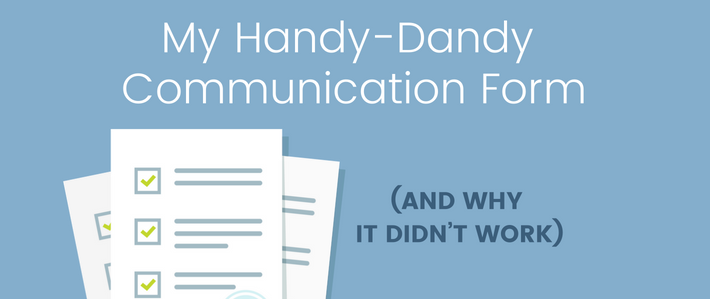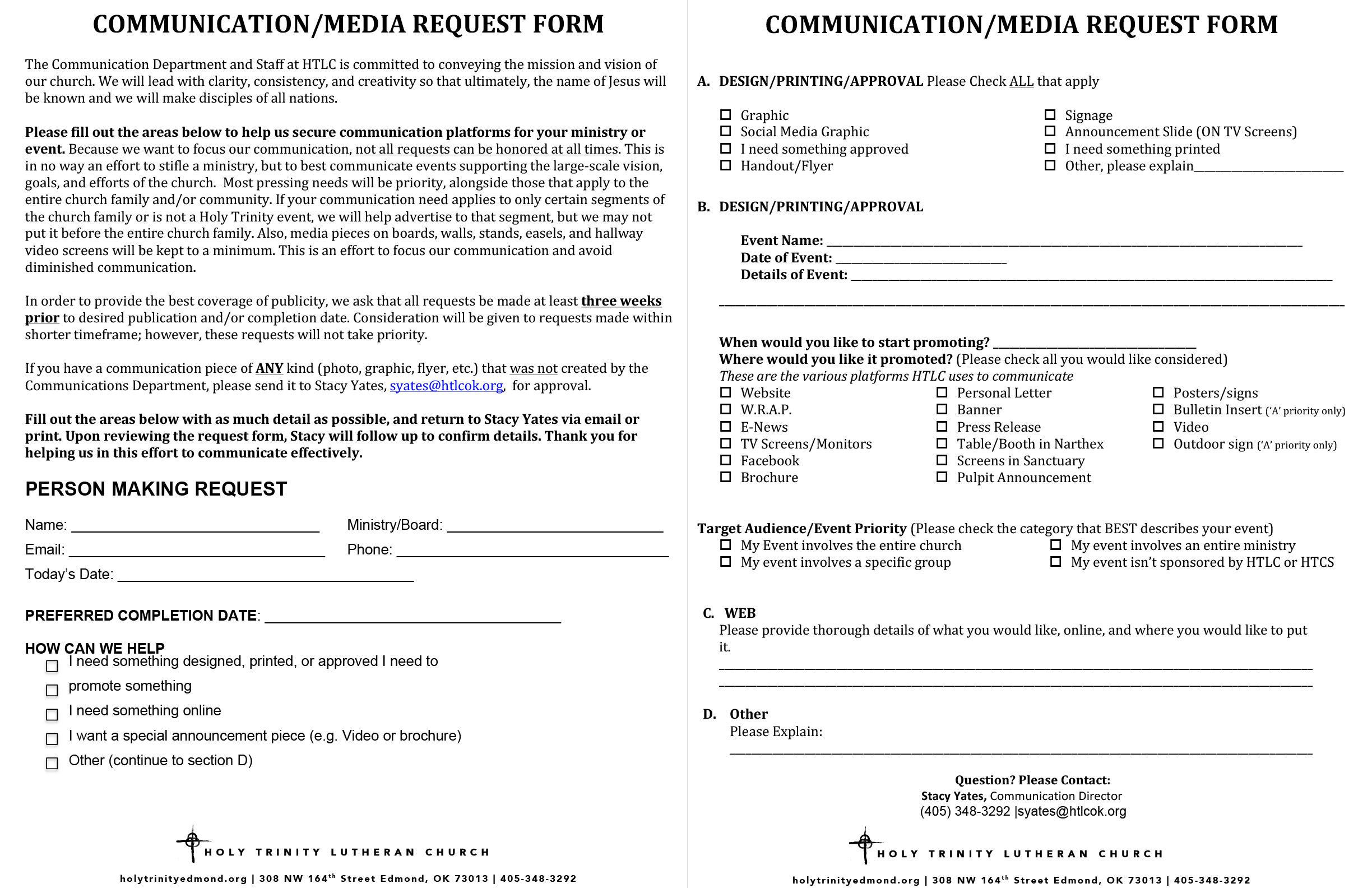
On my job description, it says, “Develop templates for media, agendas, and the like to assist busy ministry teams and lay volunteers in creating better message-driven content in a more effective amount of time.”
Great. I can do that, not too hard.
Many times I’ve heard in our congregation that we just do stuff to do stuff. How can we stop that? What TEMPLATE or PROCESS is going to help our members think before trying to add an event to the calendar? What process is going to help us be more effective in our communication?
I decided it was best that I help leaders and volunteers understand what communication is and that it is more than throwing a message out there. My plan was to help individuals understand that they must stop and think about what we are doing. And ask themselves tough questions like “who is your target audience?” “What are you needing help with or approval on?”
This template/form would save the day! My office door wasn’t going to be a revolving door of people having grand ideas before thinking them through OR forgetting to tell me something. Everyone would know what our communication department (a.k.a. me) was capable of doing and realize we have to plan ahead to be successful.
My Communication Form
I now introduce to you my handy-dandy simple two-page communication request form! Ta-da!
This simple template/form (in my mind) was going to totally change our church communication! I introduced it to the boards. I handed copies out to lay leaders. I went over it in staff meetings. I had a basket for people to turn them in. I even made it available on our website. I would hand it to people when they walked in my office and request they fill it out first. I coached the secretary on how to ask individuals to fill it out before adding something to the calendar. I thought it was brilliant! Right?
WRONG!
My hopes and dreams were quickly diminished. People didn’t want a form; they didn’t want something that slowed their idea down. They wanted to make it happen and make it happen quickly. They wanted to talk through their idea; they wanted to know why they shouldn’t just check every box on the form.
Working without a Template/Form
After a year of trying this form, I decided to abandon ship. No one was using it. No one wanted to use it. And no matter how hard I tried to change this, they were not going to change how they did things.
After realizing that no matter how hard I tried and pushed, people were not going to embrace my communication template/form, the challenge became how I was going to adjust.
Our congregation has goals and we have a lot of things going on. In my attempt to wrangle everything, I made myself more frustrated with a form that no one was using.
After crying in my office for several days (totally kidding), I decided that I needed to go back to what I know. People like connection. They want to know I care, we care, that what they are so passionately working on and are called to do for the Lord is being recognized. It’s not just being put on a piece of paper at the bottom of a pile on a desk. They want the opportunity to convey their vision for their ministry/activity, and filling out a form isn’t going to do that. And ain’t nobody got time to fill out a form!
The Value of Conversation
Many times, as leaders, we want individuals to go through a process. We want people to understand why we do things a certain way. But, sometimes it is better to hold people’s hands. It’s better to walk alongside them through the process.
I have found that every now and again, lay ministry leaders get a feeling that we don’t understand the impact of the ministry they are so passionate about, or that we aren’t giving it the attention they feel it deserves.
By tossing my form to the side and walking through the communication process with ministry leaders, I have allowed room for us to have meaningful conversations. I have been able to convey that it’s not that we think their ministry isn’t important, it’s that we must make sure we deliver the message in an effective and timely manner. This way people will not only hear, but they will also feel and connect to the message.
When people come into my office, I still walk them through the questions that are on the form, but I let our conversation lead us into more detail. Sometimes I have to bring people’s ideas back down to reality or I am able to explain that we can do so much more than they thought. By allowing them to talk through their visions, I can understand their specific needs and dreams for communicating their ministry.
I have found that the key to making this form-free process work is to let the ministry leaders lead. I let them know that my door is open and they can always schedule a call or meeting for us to discuss. My role is prioritizing and understanding what is important to the majority of our congregation. By doing this, I am able to use my time in a way that helps connect our key ministries to our people and community. When a lay leader of a specific ministry comes to me with an idea (for example, about our braille ministry), I am then able to sit down and brainstorm about how we can achieve their vision. I have realized that by allowing them to lead the conversation, they get a sense of ownership in the communication process, and it helps them understand how the process works.
For now, I am going to keep this little handy-dandy form in my drawer. There may be one day when I decide to take it out and reintroduce it. But for now I am going to stick with taking time to connect with members and explain why we do what we do in the communication department.
Join the conversation as we live-chat with Stacy about her use (or not) of communication forms in her church.
Thursday, July 12 at 11:30 a.m. (CDT) on Facebook
























